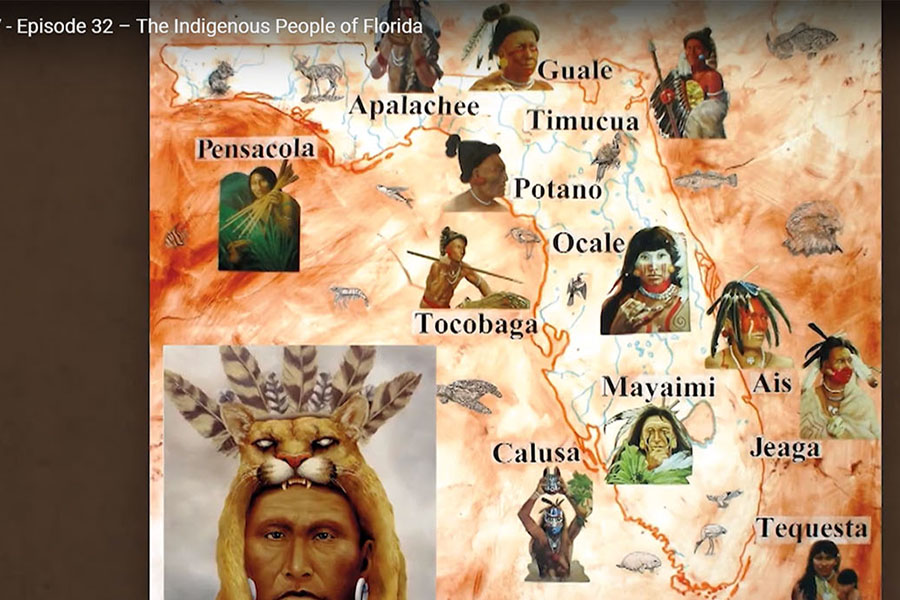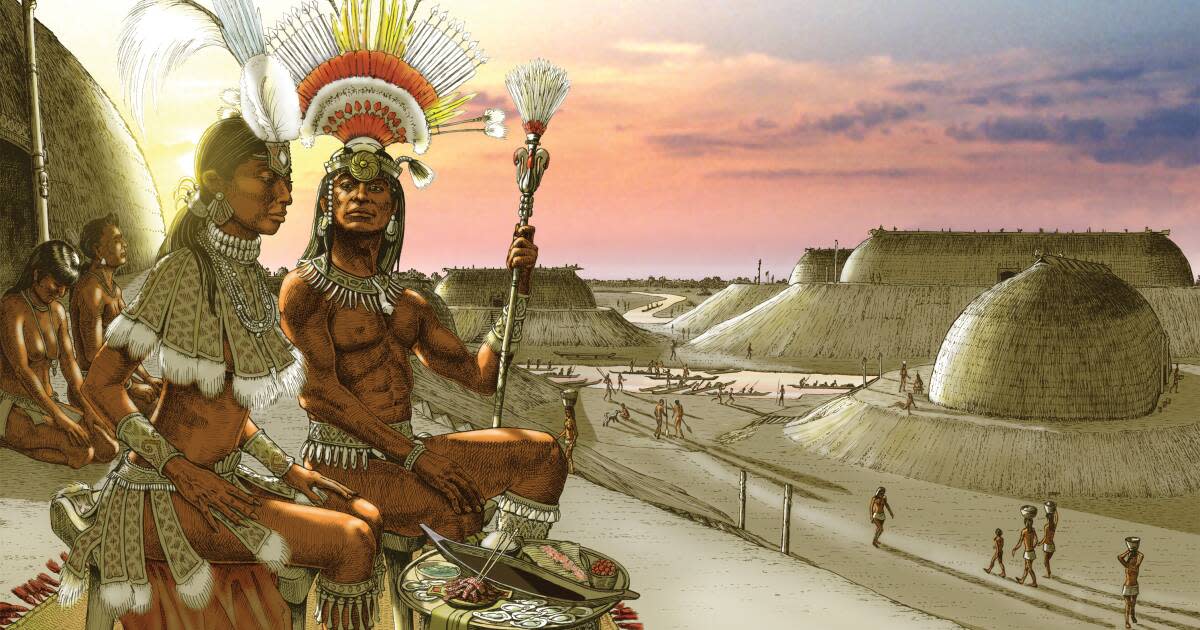A Journey Through Time: The Indigenous Peoples of Florida
A Journey Through Time: The Indigenous Peoples of Florida

Florida, a state known for its sunny beaches and vibrant culture, boasts a rich history that stretches back millennia. Long before European settlers arrived, the land was home to a diverse array of Native American tribes, each with their own unique language, customs, and traditions. These indigenous peoples, who lived in harmony with the land for centuries, played a pivotal role in shaping the state’s cultural and ecological landscape.
The Pre-Columbian Era: A Tapestry of Tribes
Related Articles: A Journey Through Time: The Indigenous Peoples of Florida
- Unveiling the Heart of Indigeneity: A Guide to Understanding Native Culture
- Royalty Unveiled: Discover the Top 3 Wealthiest Tribes in Saudi Arabia
- Unveiling the Enigmatic Siouan Indians: Rich Cultural Traditions and Mythical Legends
- Unlock Your Cherokee Roots: Discover Exclusive Benefits for Northeast Oklahoma Natives
- Unlock the Secrets of the Yanomami: A Day in Their Enchanting World
Archaeological evidence suggests that human presence in Florida dates back to at least 12,000 years, possibly even earlier. These early inhabitants, known as the Paleo-Indians, were nomadic hunter-gatherers who relied on the abundant natural resources of the land. As time progressed, these groups developed into distinct tribes, each with their own unique characteristics and adaptations to the diverse environments of the state.
The Calusa: Masters of the Coastal Waters
On the southwestern coast of Florida, the Calusa emerged as a powerful and influential tribe. Known for their mastery of the sea, they were skilled fishermen, boat builders, and navigators. Their intricate canal system, which crisscrossed the mangrove swamps and waterways, allowed them to efficiently travel and trade throughout the region. The Calusa were also renowned for their impressive shell mounds, towering structures built from the remains of shellfish, which served as burial grounds and symbols of their cultural identity.
The Timucua: Guardians of the Interior
In the interior of Florida, the Timucua tribe thrived. They were a diverse group, with numerous distinct language groups and cultural variations. The Timucua were known for their agricultural skills, cultivating crops like corn, beans, and squash. They also hunted deer, bear, and other animals, and gathered wild plants and fruits. Their villages, often located near rivers and streams, were characterized by their circular thatched houses and communal living spaces.
The Seminole: Warriors of the Everglades
The Seminole, meaning "runaway" or "wild," were a relatively late arrival to Florida. They were a diverse group, composed of Creek people who had migrated from the Southeast, along with refugees from other tribes. The Seminole adapted to the challenging environment of the Everglades, becoming skilled hunters, fishermen, and farmers. They were also known for their fierce resistance to European encroachment, engaging in numerous conflicts with Spanish and American forces.
The Impact of European Colonization

The arrival of European colonists in Florida in the 16th century marked a turning point in the history of the Native American tribes. Disease, warfare, and forced displacement took a heavy toll on indigenous populations. Many tribes were decimated, and their traditional ways of life were disrupted. Despite the hardships they faced, the Native American tribes of Florida remained resilient, continuing to fight for their land and cultural heritage.
The Seminole Wars: A Legacy of Resistance
The Seminole Wars, a series of conflicts between the Seminole people and the United States government, were a testament to the resilience and determination of the indigenous people. The wars, which spanned from the 1817 to the 1850s, were marked by intense fighting and strategic maneuvering. Although the Seminole ultimately lost their land, their resistance left a lasting legacy, inspiring generations of Native Americans and highlighting the importance of their cultural heritage.
Preserving the Legacy: The Importance of Indigenous Culture
Today, the descendants of the Native American tribes who once inhabited Florida continue to strive for recognition and preservation of their cultural heritage. They are actively involved in efforts to educate the public about their history, traditions, and contributions to the state’s cultural landscape. Through language revitalization programs, cultural festivals, and historical preservation initiatives, they are working to ensure that the stories of their ancestors are passed down to future generations.

The Future of Indigenous Culture in Florida
The future of Native American culture in Florida is intertwined with the state’s ongoing commitment to diversity and inclusion. As the state continues to grow and evolve, it is essential to acknowledge and celebrate the contributions of its indigenous peoples. By fostering understanding, respect, and collaboration, Florida can create a future where the rich heritage of its Native American tribes is not only preserved but also celebrated as an integral part of the state’s identity.
FAQ about Native American Tribes that Lived in Florida
Q: What are some of the most notable Native American tribes that lived in Florida?
A: Some of the most notable tribes include the Calusa, Timucua, Seminole, and Apalachee. Each tribe had its own distinct culture, language, and way of life.

Q: What were the main ways of life for the Native American tribes in Florida?
A: The tribes were diverse in their ways of life, but they generally relied on hunting, fishing, gathering, and agriculture. The Calusa were skilled seafarers, while the Timucua were known for their farming abilities. The Seminole adapted to the Everglades environment and became skilled hunters and warriors.
Q: What impact did European colonization have on the Native American tribes of Florida?
A: European colonization had a devastating impact on the tribes. Disease, warfare, and forced displacement led to significant population decline and cultural disruption. Many tribes were decimated, and their traditional ways of life were disrupted.
Q: What are some of the efforts being made to preserve Native American culture in Florida?
A: Many efforts are being made to preserve Native American culture, including language revitalization programs, cultural festivals, and historical preservation initiatives. There are also museums and cultural centers dedicated to showcasing the history and traditions of the tribes.
Q: What is the significance of understanding the history of Native American tribes in Florida?
A: Understanding the history of Native American tribes is crucial for a complete understanding of Florida’s past and present. It helps us to appreciate the diversity of cultures that have shaped the state’s identity and to recognize the importance of preserving indigenous heritage.
Q: How can I learn more about the Native American tribes of Florida?
A: There are many resources available to learn more about the tribes, including museums, historical societies, cultural centers, and online resources. You can also visit tribal websites and participate in cultural events to gain a deeper understanding of their history and traditions.
Closure
Thus, we hope this article has provided valuable insights into A Journey Through Time: The Indigenous Peoples of Florida. We hope you find this article informative and beneficial. See you in our next article!